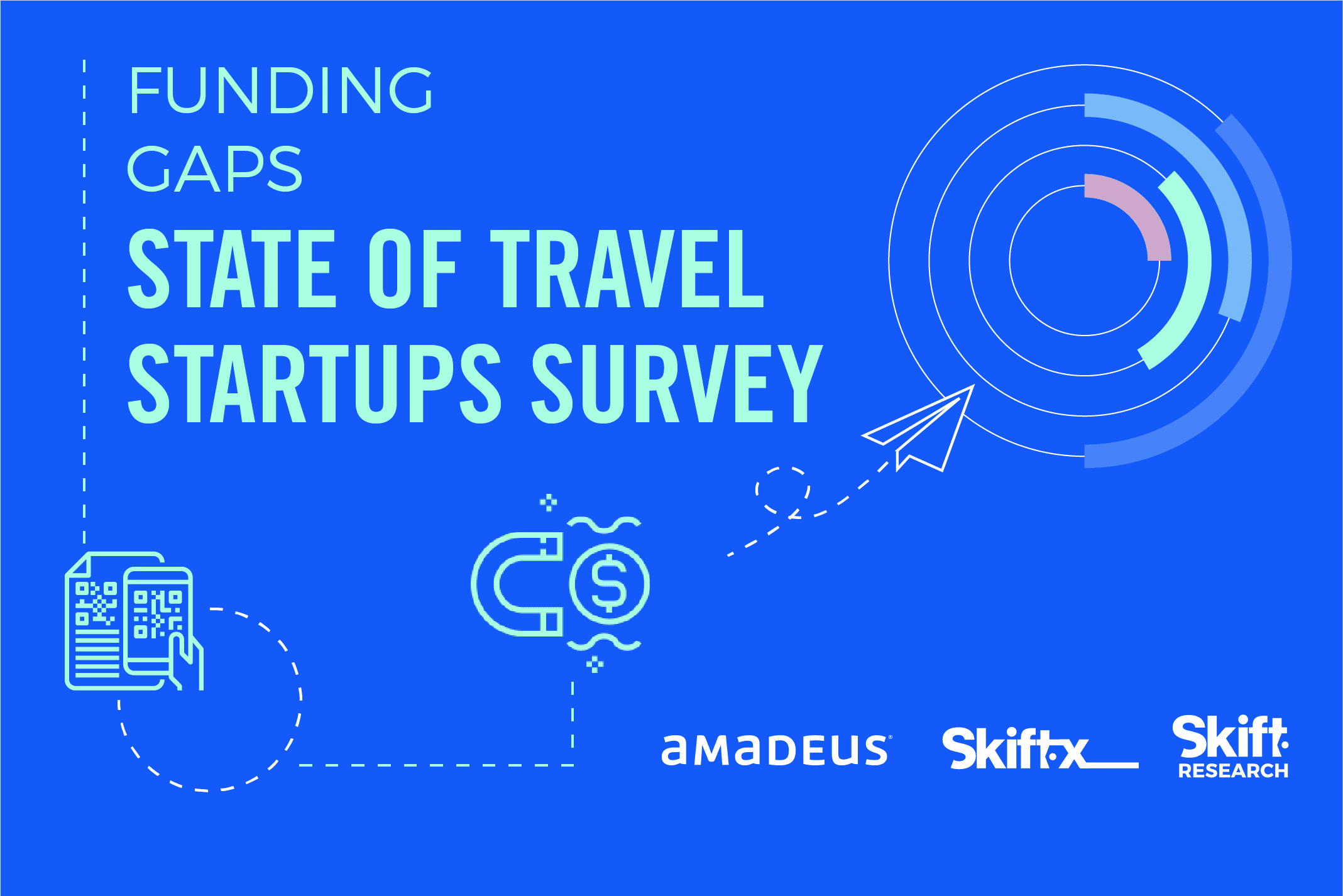Bridging the Funding Gap for Travel Startups

Skift Take
This sponsored content was created in collaboration with a Skift partner.
Skift and Amadeus teamed to launch the Skift Survey: State of Travel Startups 2018. Check out all the results and view the full infographic here.
There are many challenges facing startups in the travel space when it comes to securing funding. However, the space is seeing a fair number of deals being made. As CB Insights explained, “With 244 deals so far, 2017 has already seen more travel tech funding rounds than both 2013 and 2014, and is on track to exceed the record 316 deals observed in 2016.”
But while travel startup funding in 2017 has been strong, more often than not, companies find it difficult to move beyond early stage funding rounds. CB Insights found that these investments represented over 60 percent of deals over the past four years.
Recent research from Skift conducted on behalf of Amadeus for Startups, a program which provides cutting-edge technology, expertise, industry contacts, and consultative support to emerging travel companies, confirms that travel startups often struggle to move beyond this early stage. The research surveyed 177 individuals who work at startups focused on the travel industry and the results were insightful:
● About 64 percent were self-funded, while another 20 percent had completed a Series A round of funding.
● Only 5 percent of those surveyed reported that they had gone through a Series B round or higher.
● Meanwhile, of those who have raised funding, nearly 39 percent had raised less than $1 million in funding, while just under 20 percent raised between $1 million and $10 million.
It’s not clear whether travel firms are rarely moving beyond this stage because they have sufficient capital or because they haven’t been able to attract investors. Either way, the gap between early, mid and later stage funding persists, meaning that startups with big dreams for growth must find a path across it.
The Nature of Early vs. Middle to Late Stage Funding
Personal cash reserves and resourceful networks of family and friends may be enough to get a back-of-the-napkin concept out into the world, but eventually, promising startups discover that growth and scale in a competitive industry like travel requires capital amounts that only a financial institution or venture capital firm can supply. Luckily, bootstrapping, seed and angel funding serve new companies well because these sources are fueled by the potential of the co-founders combined with the potential of a great idea.
There are major differences between how a bank or venture capital firm thinks about funding versus how an angel investor or family friend might. Unlike an angel investor or family friend, banks and venture capital firms are accountable to shareholders. To banks and venture capitalists, the value of a startup is weighed in the context of the industry and sector in which it operates. Venture capitalists and banks don’t just invest in great ideas and talented co-founders, they invest in industries and sectors. The travel industry in particular can pose a number of risks across many sectors that are magnified when looked at through the lens of a smaller, less mature company with significantly less resources.
For example, well established travel companies (like Priceline and Expedia) with deep pockets can hold onto market share by outspending challengers with smaller marketing budgets. Also, erratic consumer habits in the industry make forecasting revenue tough, and arguably more so with yet unproven products and services. Travel technology startups must demonstrate a clear path to profitability and scalability despite hurdles like these.
Additionally, startups in the travel space aren’t just competing for venture capital dollars in the travel sector—there’s a good chance they’re competing with other technology-driven companies as well. Technology companies that skew more general tend to scale quickly, making them more attractive to venture capitalists with their potential for high growth opportunities. Meanwhile, technology-based travel companies have overhead and other operating infrastructure needs that are specific to the travel industry. For instance, the quality of relationships with suppliers on the ground, in both the domestic market and abroad, can influence the profitability of a travel startups revenue model. A travel company may therefore take longer to achieve the growth needed to lure Series B investors or higher.
One other challenge that travel startups often overlook is the fact that for most people, travel is something that only takes place a few times a year. Therefore, creating a product that will likely only be used during these occasional instances is tough for venture capitalists and banks to see the value in, especially in an already crowded market.
The Missing Link
Early stage travel companies can better compete in the race for capital later on by effectively demonstrating a strong revenue model and scalability as early as possible. Early stage valuations typically set the basis and can influence access to capital, possibly even across future rounds. Co-founders looking for funding at middle and later stages can find themselves on a grueling path, even after building some tangible value.
Forming strategic relationships with investors and other applicable partners as early as possible can help as well. It may seem that industry giants such as Uber and Airbnb are drawing all the attention from funders in the travel space, but many established companies such as JetBlue and Marriott, are experimenting with startup incubators or making strategic investments in early-stage companies. But while plugging into incubators like these or a corporate startup support program like Amadeus for Startups can provide early access to the investor ecosystem, as well as essential tools for navigating the funding landscape, startups in the travel space don’t always take advantage of these initiatives. In Skift’s survey, 51 percent of respondents said they had never participated in a program that supports startup launches, growth or funding programs.
It’s evident that during the early stage, startups should be taking a long-term vision to continued funding for success. Clearly, there’s room for opportunity when it comes to how startups in the travel sector set their sights on investment options as well as take advantage of the support opportunities in the travel space.
"We certainly understand the key role of funding in the startup community, says Kerri Zeil, head of Amadeus for Startups. As part of the Amadeus for Startups program, we help startups get in touch with investors so they can work together on funding strategies essential for long-term success.”
Check out the Amadeus for Startups infographic below to learn more about how travel startups can cross the funding gap.
This content was created collaboratively by Amadeus and Skift’s branded content studio, SkiftX.





